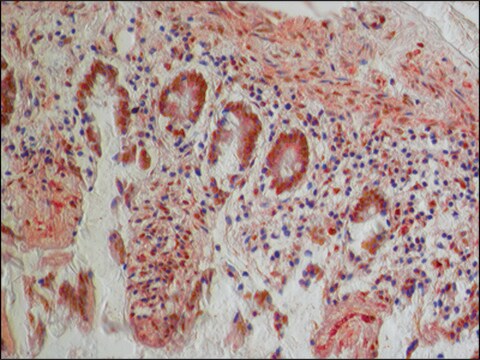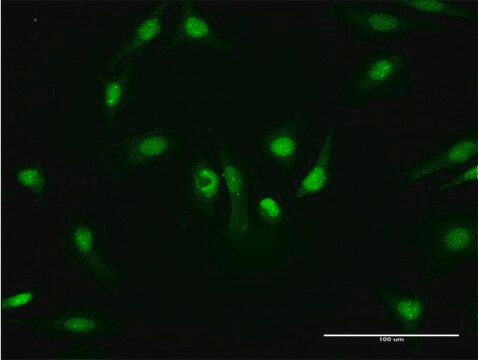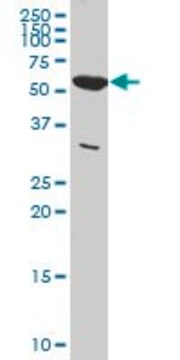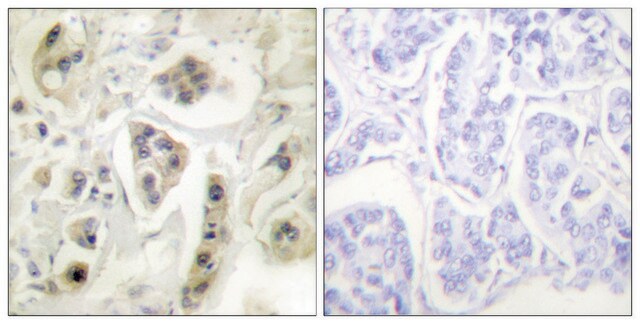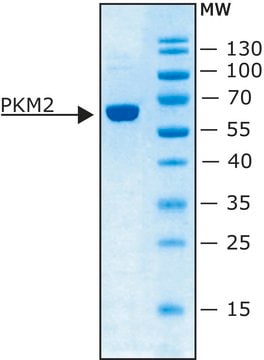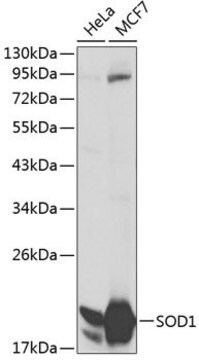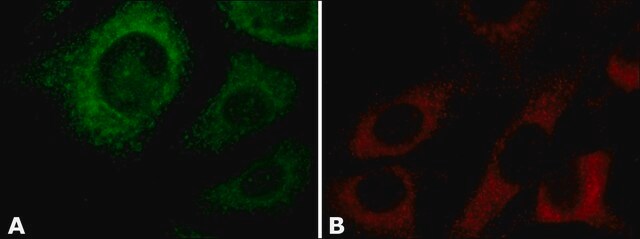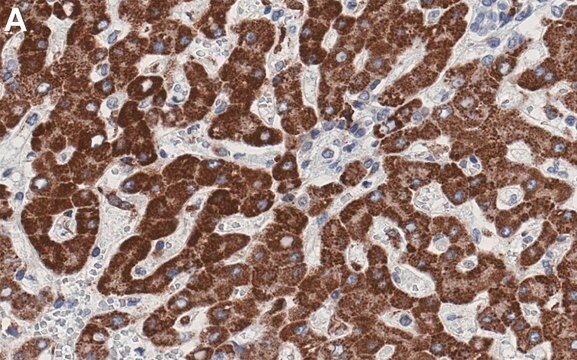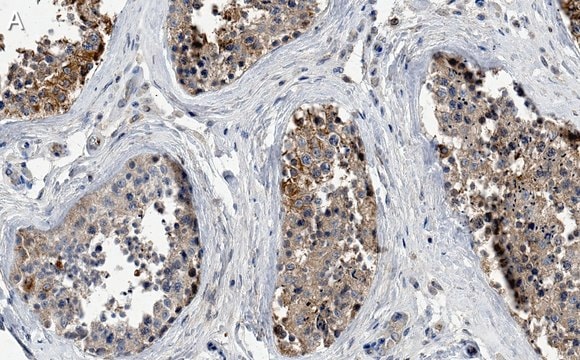SAB4200095
Anti-PKM2 (isoform M2) antibody produced in rabbit
~1.5 mg/mL, affinity isolated antibody
Sinônimo(s):
Anti-CTHBP, Anti-OIP3(OPA-interacting protein 3), Anti-PK3, Anti-PKM, Anti-Pyruvate Kinase, MUSCLE (isoform M1), Anti-TCB, Anti-THBP1 (thyroid hormone-binding protein, cytosolic)
About This Item
Produtos recomendados
fonte biológica
rabbit
conjugado
unconjugated
forma do anticorpo
affinity isolated antibody
tipo de produto de anticorpo
primary antibodies
clone
polyclonal
Formulário
buffered aqueous solution
peso molecular
antigen ~60 kDa
reatividade de espécies
human
concentração
~1.5 mg/mL
técnica(s)
immunohistochemistry: 10-20 μg/mL using formalin-fixed paraffin embedded human colon carcinoma
immunoprecipitation (IP): 2-4 μg using HT29 cell lysates
indirect immunofluorescence: 4-8 μg/mL using HeLa cells
western blot: 0.5-1.0 μg/mL using HeLa cell extracts
Condições de expedição
dry ice
temperatura de armazenamento
−20°C
modificação pós-traducional do alvo
unmodified
Informações sobre genes
human ... PKM2(5315)
Categorias relacionadas
Descrição geral
Especificidade
Aplicação
- chromatin immunoprecipitation (chip) assay
- western blotting
- immunofluorescence
- immunohistochemistry
Ações bioquímicas/fisiológicas
forma física
Exoneração de responsabilidade
Não está encontrando o produto certo?
Experimente o nosso Ferramenta de seleção de produtos.
Código de classe de armazenamento
10 - Combustible liquids
Ponto de fulgor (°F)
Not applicable
Ponto de fulgor (°C)
Not applicable
Escolha uma das versões mais recentes:
Certificados de análise (COA)
Não está vendo a versão correta?
Se precisar de uma versão específica, você pode procurar um certificado específico pelo número do lote ou da remessa.
Já possui este produto?
Encontre a documentação dos produtos que você adquiriu recentemente na biblioteca de documentos.
Artigos
We presents an article about the Warburg effect, and how it is the enhanced conversion of glucose to lactate observed in tumor cells, even in the presence of normal levels of oxygen. Otto Heinrich Warburg demonstrated in 1924 that cancer cells show an increased dependence on glycolysis to meet their energy needs, regardless of whether they were well-oxygenated or not.
Global Trade Item Number
| SKU | GTIN |
|---|---|
| SAB4200095-25UL | |
| SAB4200095-200UL | 4061837914355 |
Nossa equipe de cientistas tem experiência em todas as áreas de pesquisa, incluindo Life Sciences, ciência de materiais, síntese química, cromatografia, química analítica e muitas outras.
Entre em contato com a assistência técnica